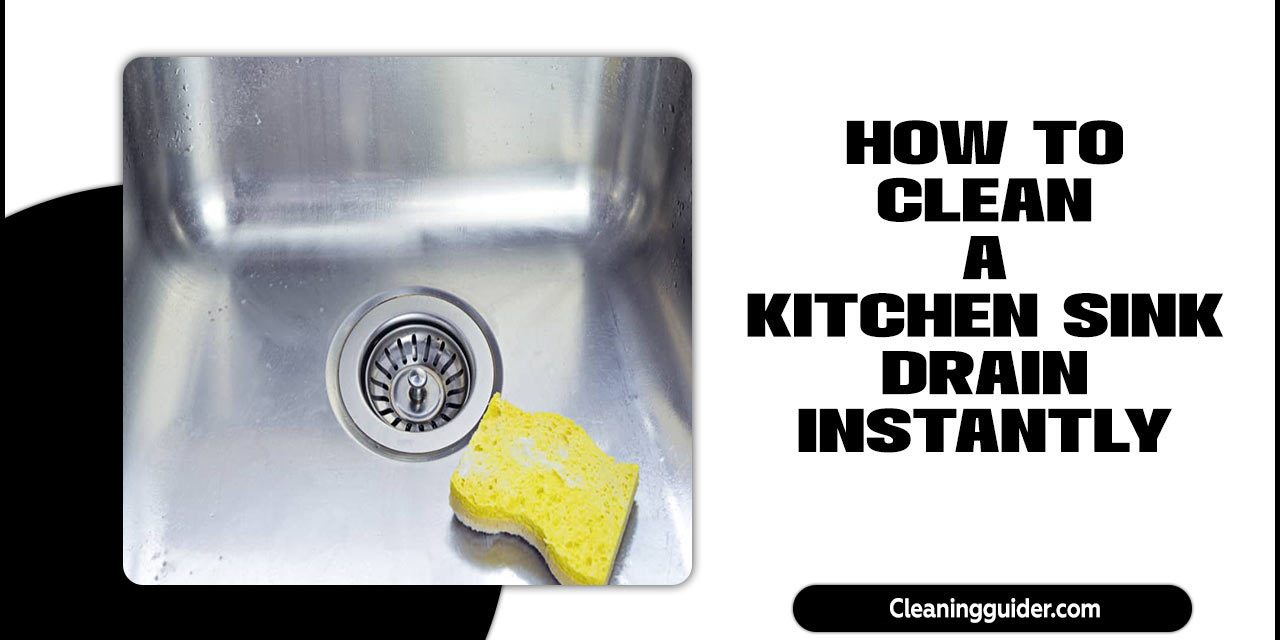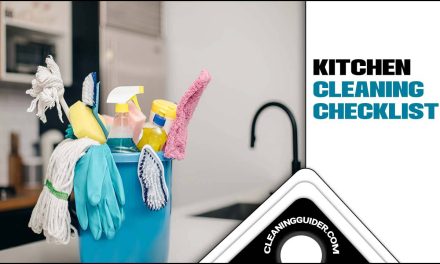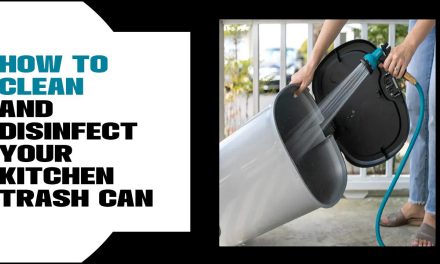A clean and properly functioning kitchen sink drain is essential for a hygienic and efficient kitchen. Regular maintenance is key to preventing clogs and unpleasant odors.
However, even with the utmost care, a kitchen sink drain can become clogged with food particles, grease, and other debris. This not only hinders the flow of water but can also create an unsanitary environment. In such situations, knowing how to clean a kitchen sink drain instantly can save you time and money.
A clogged drain can disrupt your daily routine and require expensive plumbing services if left untreated. We will discuss a step-by-step guide on how to clean your kitchen sink drain using common household items effectively. Say goodbye to slow drainage and unpleasant smells with these simple yet effective methods.
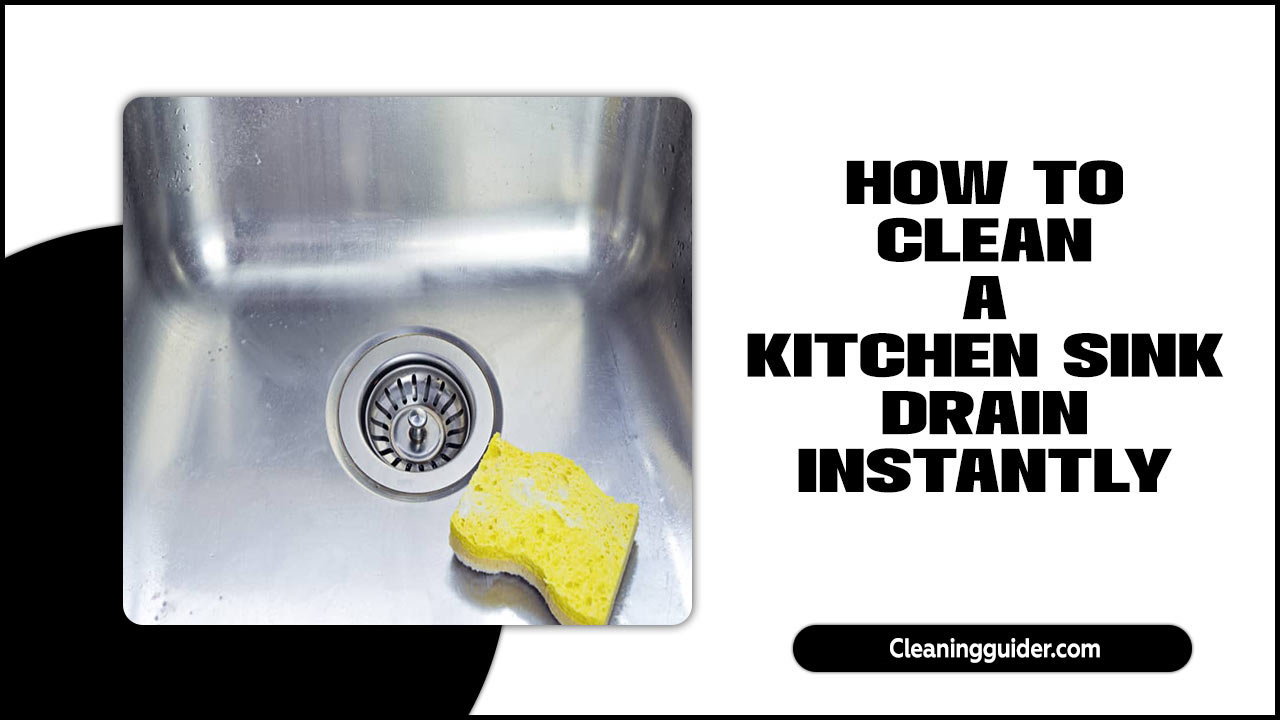
Equipment / Tools To Clean A Kitchen Sink Drain Instantly
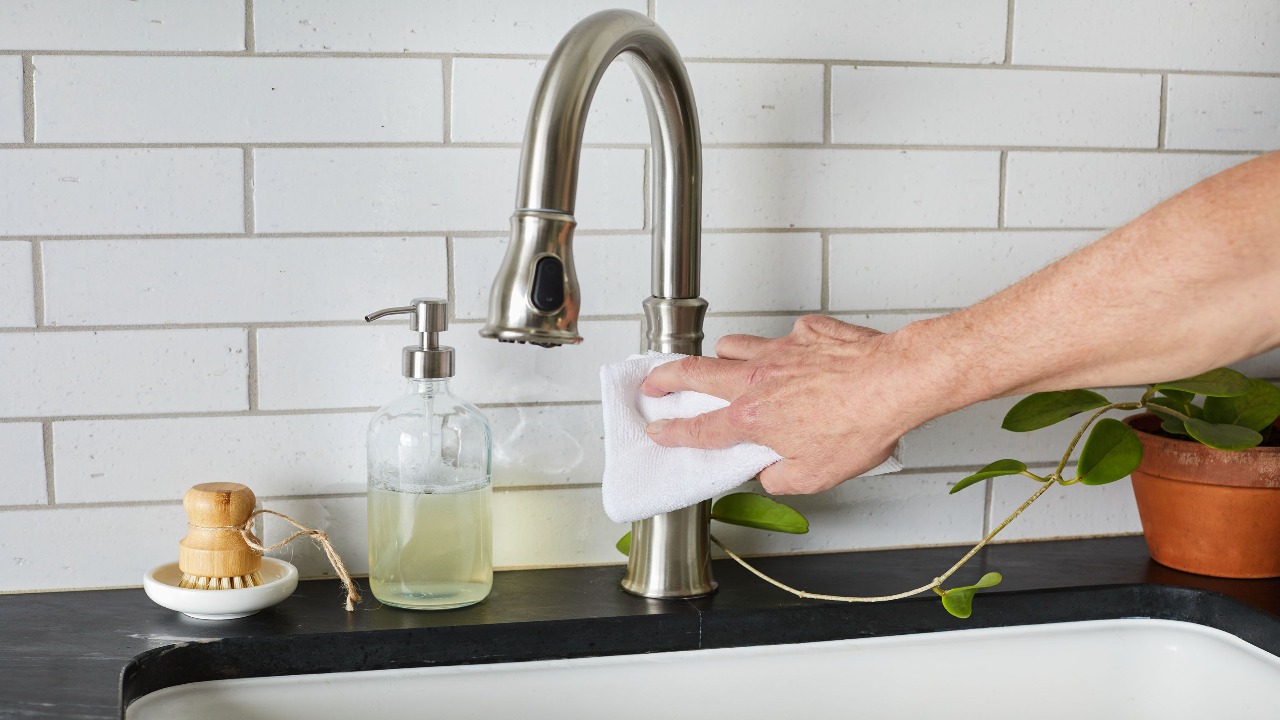
Knowing the right equipment and tools to clean a kitchen sink drain instantly is essential for maintaining a clean and hygienic kitchen environment. A clogged sink drain can lead to unpleasant odors, standing water, and even the growth of harmful bacteria. Therefore, it is crucial to have the necessary knowledge and tools to address this issue promptly.
- Plunger: A plunger can help to dislodge any clogs or blockages in the sink drain. Choose a plunger specifically designed for sinks, with a flat bottom or a smaller flange for a better seal.
- Drain Snake Or Auger: A drain snake or auger is a long, flexible tool that can reach deep into the drainpipe to break apart or remove clogs. It is especially useful for more stubborn or hard-to-reach blockages.
- Baking Soda And Vinegar: A mixture of baking soda and vinegar can be an effective natural remedy for clearing minor clogs. Pour half a cup of baking soda down the drain, followed by half a cup of vinegar. Let it sit for a few minutes, then flush with hot water.
- Boiling Water: Boiling water can help to dissolve grease and other substances that may be causing the clog. Carefully pour a kettle of boiling water down the drain, taking care not to splash yourself.
8 Steps On How To Clean A Kitchen Sink Drain Instantly
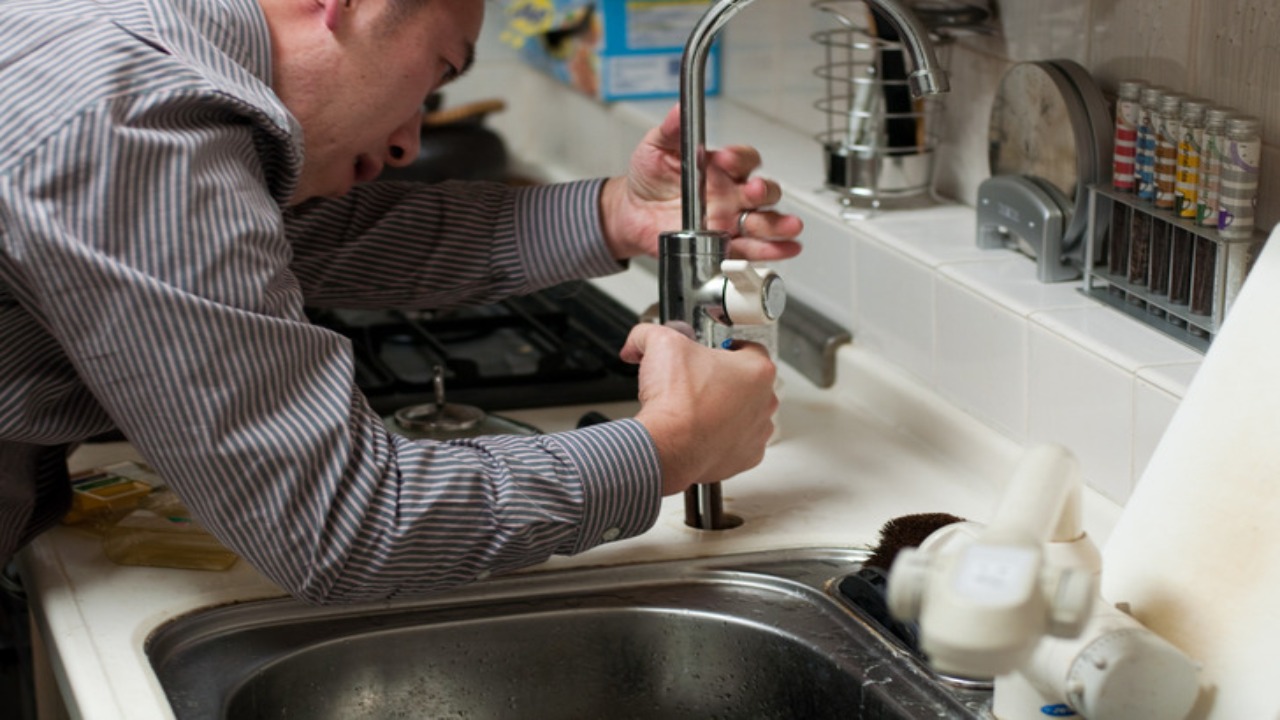
Knowing how to clean a kitchen sink drain instantly is of utmost importance for several reasons. Firstly, maintaining a clean and unclogged sink drain is essential for the overall hygiene and functionality of the kitchen.
A clogged sink not only hampers daily chores but also poses health risks by becoming a breeding ground for bacteria and unpleasant odors. By learning the proper techniques to clean a kitchen sink drain instantly, individuals can prevent the accumulation of food particles, grease, and other debris that can lead to blockages and foul smells.
1.Gather Supplies
In order to effectively clean a kitchen sink drain, it is essential to gather the necessary supplies beforehand. These supplies include rubber gloves, a plunger, a bucket, a pipe wrench, baking soda, vinegar, and hot water. By having these tools readily available, one can ensure a smooth and efficient cleaning process.
To begin the cleaning process, it is important to put on a pair of rubber gloves to protect your hands from any potential bacteria or debris that may be present in the drain. Next, using a plunger, create a tight seal around the drain and vigorously plunge up and down several times. This action will help to dislodge any clogs or blockages that may be obstructing the flow of water.
2.Empty The Sink
Maintaining a clean and properly functioning kitchen sink is essential for a hygienic and efficient culinary workspace. One common issue that often arises is a clogged drain, creating a hindrance to daily activities. To address this problem promptly and effectively, it is important to know how to clean a kitchen sink-drain instantly.
It is crucial to empty the sink of any standing water or debris that may be present. This can be achieved by using a cup or a bowl to scoop out the water and discard it. Once the sink is empty, the next step is to locate the drain stopper or plug and remove it carefully. This will expose the drain opening, allowing for further cleaning.
3.Clean The Sink Basin
Keeping the sink basin clean is essential for maintaining a sanitary and pleasant kitchen environment. A dirty sink not only looks unsightly, but it can also harbor bacteria and unpleasant odors. To ensure a pristine sink basin, regular cleaning is necessary. Start by removing any dishes or debris from the sink.
- Gather necessary cleaning supplies such as a mild dish soap, a sponge or soft cloth, and a scrub brush.
- Remove any items or debris from the sink basin, such as dishes or food scraps.
- Rinse the sink basin with warm water to help loosen any dirt or grime.
- Apply a small amount of dish soap to the sponge or soft cloth and gently scrub the entire sink basin, focusing on any stained or dirty areas.
- For tougher stains or buildup, use a scrub brush with firm bristles to scrub the sink basin more effectively.
- Rinse the sink basin thoroughly with warm water, ensuring all soap residue is removed.
- Wipe down the sink basin with a clean, dry cloth to remove any excess moisture and prevent water spots.
- To maintain a fresh and clean sink basin, regularly wipe it down with a damp cloth after each use and avoid leaving dirty dishes or standing water in the sink for extended periods.
4.Clean The Drain
Maintaining a clean and functional kitchen sink drain is essential for a hygienic and efficient kitchen. Over time, food particles, grease, and other debris can accumulate in the drain, leading to unpleasant odors and clogged pipes. To ensure a smoothly running kitchen sink drain, it is important to know how to clean it instantly and effectively.
- Gather necessary cleaning supplies such as dish soap, a sponge or cloth, baking soda, white vinegar, and a toothbrush.
- Remove any dishes or debris from the sink basin.
- Rinse the sink basin with warm water to remove any loose dirt or residue.
- Apply dish soap to a sponge or cloth and scrub the entire sink basin, paying special attention to areas with stains or buildup.
- For tough stains or odors, sprinkle baking soda onto the surface of the sink basin and scrub gently with a toothbrush. Rinse thoroughly.
- To remove mineral deposits or limescale, soak a cloth in white vinegar and place it on the affected areas. Let it sit for a few minutes, then scrub and rinse.
- Wipe down the sink basin with a clean, damp cloth to remove any remaining soap or cleaning solution.
- Dry the sink basin with a towel to prevent water spots or streaks.
5.Plunge A Clogged Sink
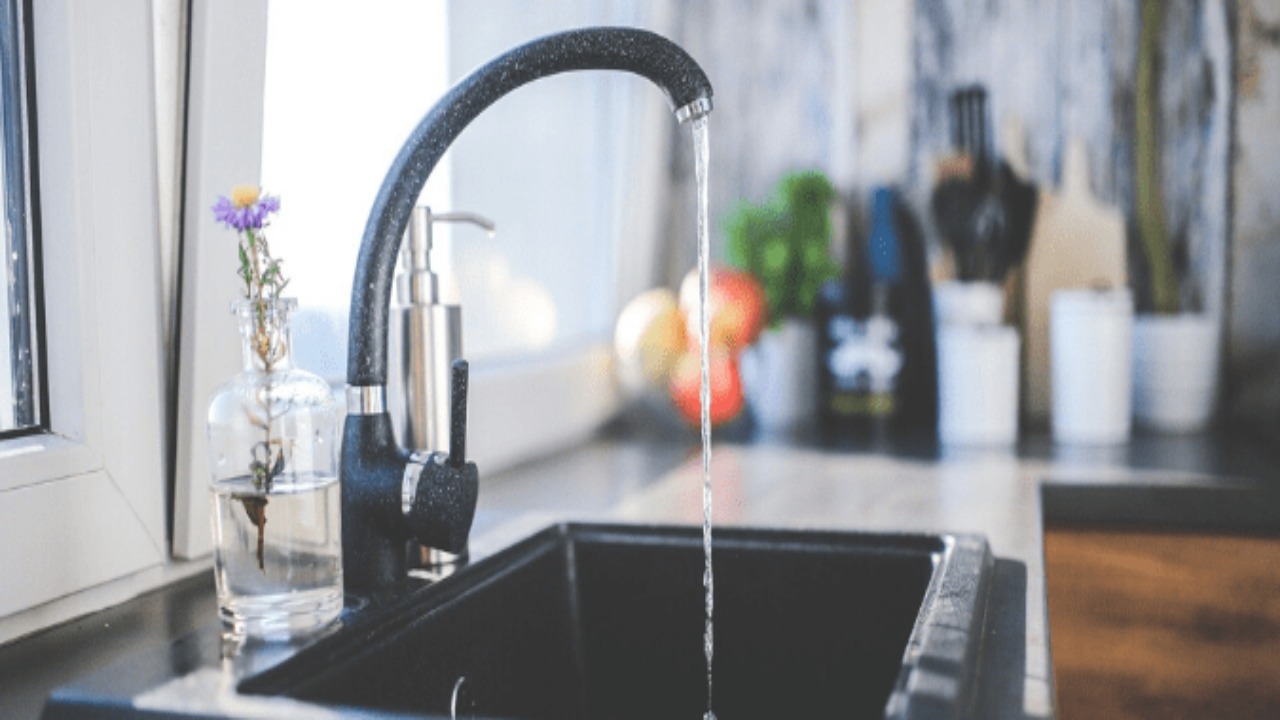
Having a clogged sink can be a frustrating experience, disrupting the smooth functioning of our daily kitchen activities. When faced with such a situation, it is crucial to act promptly and efficiently to restore the sink’s functionality. One effective method to tackle this issue is by plunging the clogged sink. Plunging involves using a plunger to create a powerful suction that dislodges the blockage and allows water to flow freely once again.
- Start by filling the sink with enough water to cover the rubber part of the plunger.
- Position the plunger over the drain, ensuring that it covers the entire opening.
- Use both hands to firmly press the plunger down, creating a seal around the drain.
- Begin plunging by applying strong and rapid upward and downward motions.
- Continue plunging for about 2030 seconds or until you feel the resistance start to decrease.
- Once you have successfully cleared the clog, remove the plunger and run water to check if the sink is draining properly.
- If the sink is still clogged, repeat the plunging process or try using a plumbing snake to remove any stubborn blockages.
6.Kill Germs And Odors With Lemons
Maintaining a clean and hygienic kitchen is of utmost importance, as it is the heart of any home. To ensure a healthy environment, it is crucial to effectively eliminate germs and odors that can accumulate in various areas, such as the kitchen sink drain.
One natural and efficient solution to tackle this issue is by using lemons. Lemons possess powerful antibacterial properties that can help combat harmful bacteria, while their refreshing scent works wonders in neutralizing unpleasant odors.
- Lemons have natural antibacterial properties that make them effective in killing germs.
- Cut a lemon in half and rub it on surfaces to sanitize and kill germs.
- Lemon juice can be used as a natural disinfectant spray by mixing it with water in a spray bottle.
- Lemon peels can be used to eliminate odors by placing them in areas with unpleasant smells.
- Lemon juice can be added to laundry to help remove odors and kill bacteria on clothes.
- Lemon essential oil can be diffused or added to cleaning solutions for a fresh and germ-free environment.
- Lemons can also be used to clean cutting boards, kitchen utensils, and other surfaces that come into contact with food.
7.Rinse The Sink

Maintaining a clean and hygienic kitchen environment is essential for any homeowner or professional chef. One crucial area that requires regular attention is the kitchen sink and its drain. Often overlooked, a neglected sink drain can lead to unpleasant odors and even potential health hazards.
To ensure a spotless and odor-free sink, it is important to know how to clean a kitchen sink drain instantly. To begin the cleaning process, it is necessary to rinse the sink thoroughly.
This can be done by using warm water and a mild detergent to remove any food particles or residue that may have accumulated. A soft sponge or cloth should be used to gently scrub the sink surface, paying special attention to corners and crevices where dirt tends to hide.
8.Wipe It Dry
Maintaining a clean and hygienic kitchen is essential for a healthy and pleasant cooking environment. One crucial aspect of kitchen cleanliness is ensuring that the sink drain is kept free from any buildup or blockages. To achieve this, it is important to know how to clean a kitchen sink-drain instantly.
The first step is to wipe it dry regularly. After each use, take a clean cloth or paper towel and wipe the sink dry to prevent any standing water or moisture from accumulating in the drain. This simple action can help prevent the growth of bacteria and eliminate any odors that may arise from a damp drain.
How Often Do You Need To Clean The Kitchen Drain?
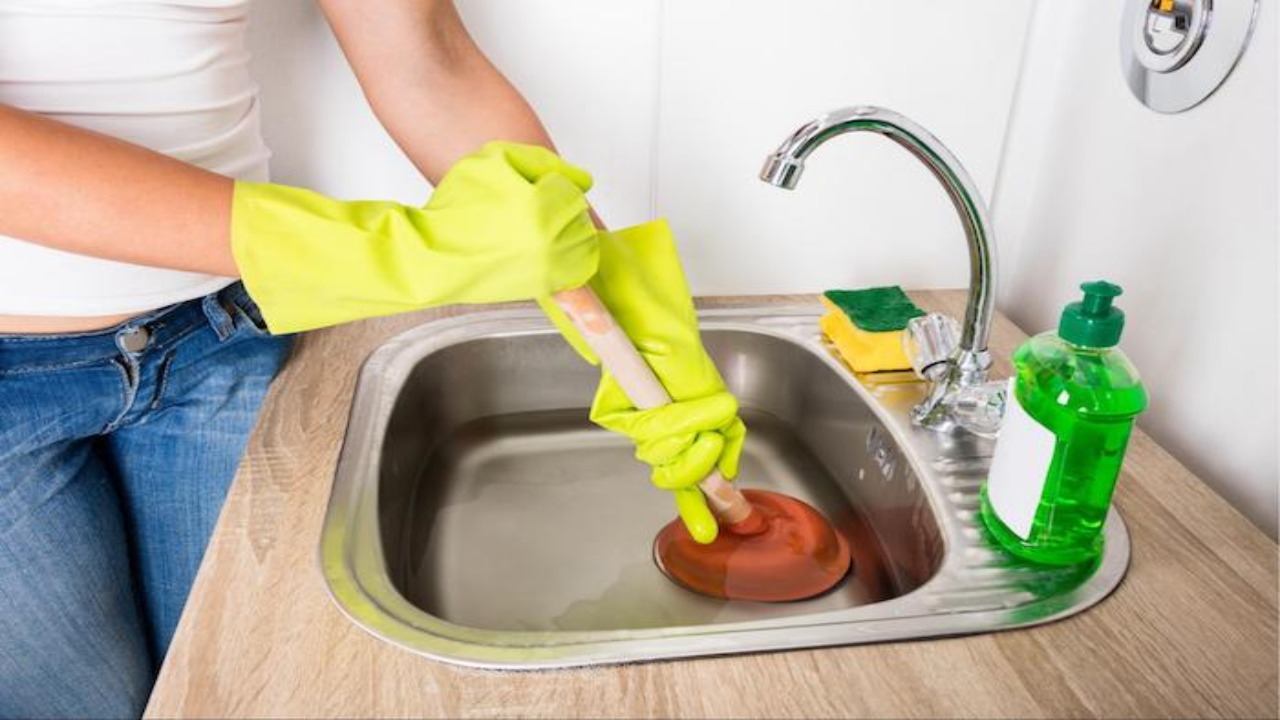
Maintaining a clean and functional kitchen drain is essential for a hygienic and efficient kitchen environment. The frequency at which you should clean your kitchen drain depends on various factors.
Generally, it is recommended to clean the kitchen drain at least once a month to prevent the buildup of food particles, grease, and other debris that can lead to clogs and unpleasant odors. However, if you have a particularly active kitchen with heavy usage, you may need to clean the drain more frequently.
Factors such as the size of your household, the types of meals prepared, and the types of ingredients used can also affect how often you need to clean the kitchen drain. For instance, a larger family that cooks meals from scratch more frequently may require more frequent cleaing than a smaller household that eats out more often.
Conclusion
Keeping your kitchen sink drain clean is not only important for maintaining a hygienic kitchen, but it can also prevent costly plumbing issues in the future. Not only does it keep unpleasant odors and bacteria at bay, but it can also prevent costly plumbing issues in the future. By using simple household items and following the steps outlined in this guide, you can easily clean your kitchen sink drain in just a few minutes.
Regularly cleaning your drain will not only save you time and money but will also ensure a healthy and functional kitchen for you and your family. Remember to practice proper maintenance and cleaning habits to keep your kitchen sink drain running smoothly. If you read the above outline properly, we hope you now understand How To clean A kitchen Sink Drain Instantly.
FAQ
1.Why Is It Important To Clean A Kitchen Sink Drain Regularly?
Ans: Cleaning a kitchen sink drain is important to prevent clogs, eliminate foul odors, and maintain proper drainage. Cleaning a kitchen sink drain may seem like a mundane task, but it is actually crucial in keeping your kitchen functioning properly.
2.What Are The Steps To Clean A Kitchen Sink Drain Instantly?
Ans: First, remove any visible debris from the drain opening. Then, pour a mixture of baking soda and vinegar down the drain. Let it fizz for a few minutes before flushing with hot water. Finally, finish by running boiling water down the drain to clear any remaining residue.
3.Are There Any Alternative Methods For Cleaning A Kitchen Sink Drain?
Ans: Yes, another effective method is using a combination of salt and boiling water. Pour a handful of salt down the drain, followed by boiling water. Allow it to sit for a few minutes, then flush with hot water.
4.What Household Items Can Be Used To Unclog A Kitchen Sink Drain?
Ans: You can quickly clean a kitchen sink drain by using a mixture of baking soda and vinegar. Pour the mixture down the drain and let it sit for a few minutes before flushing it with hot water.
5.Are There Any Natural Methods To Instantly Clean A Kitchen Sink Drain?
Ans: Yes, you can clean a kitchen sink drain instantly by using a combination of salt and lemon juice. Sprinkle salt down the drain, followed by lemon juice. After a few minutes, rinse it with hot water to remove any clogs.

